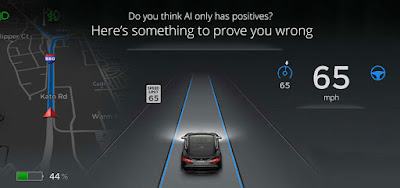Mobile application design has got some new
dimensions to it in the past few years, especially since mobile app development company India have raised the bar in terms of
functionality and execution. And under the effect of it, people have started to
appreciate designs that give more than just backdrops for the application and contribute
to the functionality and direction. Before even starting out the design
development, there are certain factors that a designer shall keep in mind. This
article discusses the same.
Keep the type of app in mind
The kind of mobile application you are
going to develop for the design for, is quite deterministic in what design
elements you should be using. For example – if the application is for some
social media platform, you need to focus more on the appeal, colours and other
feel good design elements. If the application offers payment services, there is
not much role of colours. In this case, you may want to focus more on components
that focus intensively on the comprehensiveness of flow. By keeping in mind,
the kind of app to be developed, designers can focus on the design strategy
from the very beginning and avoid too much iteration during the design development
process.
Make it responsive
Mobile applications that are responsive
create user engagement. The higher the responsiveness, the more the user
engagement; after all that is what design is meant for. Mobile apps development now spans a larger space than ever and
keeping up with each platform, device, screen size and more, is important for a
business to expand their mass reach. During the designing process, make sure
the components of the application are flexible and tuned to major environments,
especially the images that lose quality on different platforms. So, consider iterating
UI to make sure your app doesn’t fail on the responsive front.
Simple or material?
Choosing among simple or material, don’t
forget skeuomorphic design has already been thrown out of the window. Just
saying.
Rapidly moving on, whether you need to have
simple or material design for your application partly depends upon your budget
as well. However, material design is always much better when it comes to
guiding the user swiftly through the application. But a lot of money can be
saved as well, if the application doesn’t really need material design. For
example – an application with complicated solutions like payments, bookings,
online purchases etc. demand material designs. On the other hand, an app built
for nursery school rhymes doesn’t really require material design. Or maybe it
does. The point is: you can choose to skip.
Approach
Keep it simple! And when we say simple, we
don’t mean simple or materialistic; we mean simple. Apart from the type of
design you choose for the mobile application, the approach you devise for the
application also matters. While some designers would lose track of the purpose
of app, good designers would not load the interface with excessive components
to make sure the utility of the app is quite clear from the very beginning. To
make it easier for users to understand, the designer must also keep in mind the
kind of platform the app is based on. Make best use of what the platform offers
and watch for what the top applications of the platform have in common, for
which the designers may need to work closely with Android app development. Most of the users are comfortable with the
default OS design configuration and would not prefer shifting to a different
environment, in which case, using the platform abilities would be the right
choice.
Design is all about connecting with the
people; more visually, less textually. Be it any platform, a good design never
ceases to impresses users and engage them effectively. And while piece of
design could be simple or quite frilled, it doesn’t have to be complicated, so
that it always connects well with the users.


